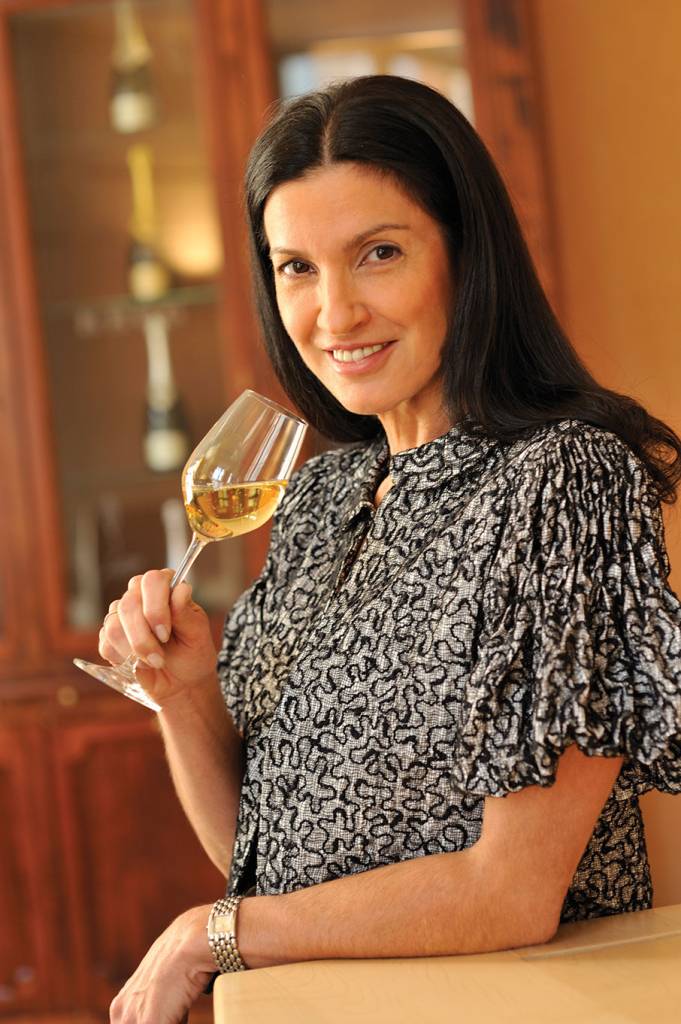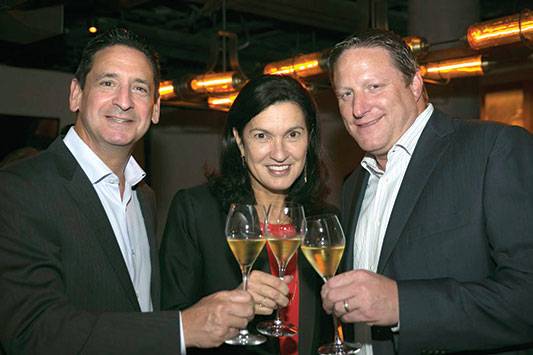The Velvet Glove: Maggie Henriquez
The President and CEO of Krug Champagne’s name is Maggie Henriquez, which is not exactly the kind of name you’d expect running the world’s most esteemed Maison de Champagne. That’s because she is the first woman and the first South American to head a major French Champagne house. As it turns out, her unique talents are exactly what Krug needed to take the brand into the next century and bring their message to a new generation of champagne drinkers. “It’s about generosity,” she says. Which sounds cryptic until she explains that the Krug family’s love of wine making, and passion to share it, is at the heart of the company. It began with Joseph Krug in 1843, who set out to make a superlative product with only the very best wines instead of mixing wines of varying qualities. He also refused to make a line that included lower quality, less expensive labels. Krug wanted to make only two expressions, both of equal quality.
The Grand Cuvée is a multi-color Champagne and the only expression Krug is sure to produce every year. Each vintage has a distinctly different personality and is blended from a catalog of a staggering 150 different wines from 13 different years and many different terrains. “It’s all that Champagne can give you in a glass,” she says comparing each different wine as a member of a symphony creating beautiful music. She also notes that they go to great lengths “not to interfere” or add anything to the naturally occurring processes. “Krug goes above and beyond. It’s the Haute Couture of wine,” she says. “It is easy for me to understand the profile of the people who drink Krug because they are very much like me. They make their own decisions,” says Henriquez, whose personal style exudes the ‘quiet luxury’ Krug is all about. “True luxury is always elegant and discreet.”
“When you make a vintage, it is about what that year is for us.” Indeed, each year’s Krug is very distinct, much like a year in a person’s life. For Henriquez, the most special year was 1978, the year Henriquez started her career in her home country of Venezuela. She had just earned an Engineering degree. “I was only the second generation of engineers in Venezuela,” she says. “Everyone was having problems with systems in those days, very expensive problems,” she explains looking slightly nostalgic. Fortunately, Hernandez specialized in systems. She worked seven years for a holding company that had wine and spirits as well as perfume brands seven years she came to the aid of the president of another company she worked with. He was so grateful he asked her if he could help with her career planning.
“He asked me what I really wanted and I said ‘When I am your age [40], I’d like to be president of a company, too.’ He told me that I had to go into the marketing or commercial side of business. I didn’t know anything about it, so he gave me lists of books to read that were popular marketing books of the time and I read them all. Stacks of them.” But when the time came for her to ask her boss to switch divisions, she was met with resistance. “He said I wasn’t a dreamer, since I worked on computers.” Maggie, however, was creative and cited that she had dreamt up their entire mainframe. Still no sale. So one day, she came in and put on an entire puppet show complete with story, voices and her on guitar. He finally admit she was a dreamer, but no job materialized until the company’s marketing department imploded a mere month later. She was offered the position only if she would take it without title or salary. She did.
Later, she left to become GM of a company eventually acquired by Seagrams, after which she finally earned her coveted title of President in 1991. She had arrived at her goal, but felt the advent of laptops and new technology made her education feel slightly out of date. So, in 1995, she entered Harvard’s advanced Senior Management Program. Coming out of the program she was offered the presidency of Nabisco in Mexico, which was hemorrhaging money. So Henriquez picked up her two children and moved to Mexcio, in the middle of a financial crisis. While in the midst of a divorce, she turned Nabisco Mexico around from losing $24 million a year to a thoroughly profitable venture. And she did so without firing a single employee. Naturally, this got the attention of other multinationals and soon an offer from Moët Hennessy was on the table to oversee their operations in Argentina. “Moët and Chandon was the first company ever to go abroad into new territories,” says Henriquez, who became deeply involved in wine making there.
Impressed, Moët eventually asked her to move to France to head up Krug in 2009, which was in need of a skilled communicator to get out their unique message of quality, without going the traditional routes. “It was difficult to sell Krug because we didn’t know how to talk about it,” she says. Five years later, Henriquez has perfected Krug’s message and cast it widely. She lives in Paris with her French husband and takes the train every day to Champagne. She enjoys the freedom of being care free, riding her bike whenever possible. “If you had told me ten years ago I wouldn’t have a car, I would have thought that was impossible.” But now, Henriquez feels, that such freedom is a “power of choice” she’s earned. There is only one choice she wants everyone to make. “Don’t use a flute to drink Krug,” she says, insisting it limits the transmission of the bouquet. “It’s like listening to a concert with earplugs.”















